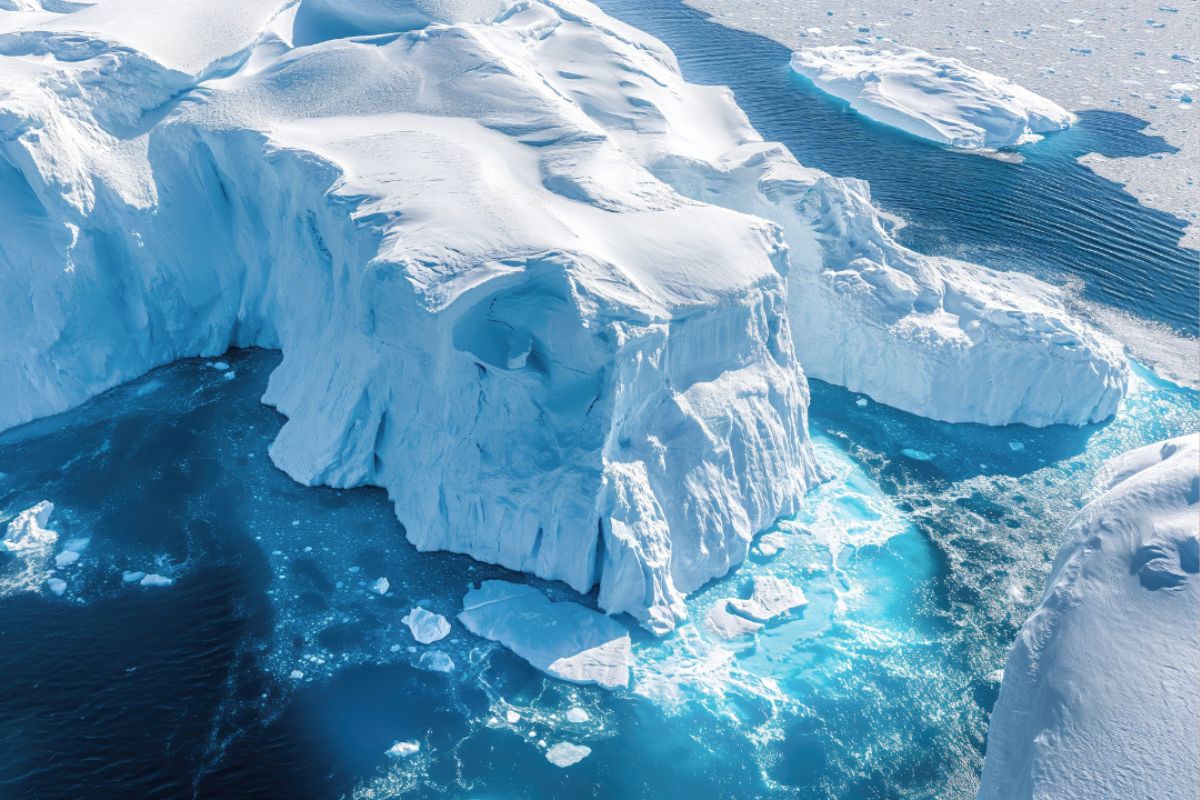Show table of content Hide table of content
In a groundbreaking discovery, scientists from the Schmidt Ocean Institute have captured the first-ever footage of an extremely rare marine creature following the recent calving of an Antarctic iceberg. This unprecedented event has opened a window into a previously unexplored marine ecosystem, revealing species that had remained hidden beneath the ice for decades.
Unprecedented discovery in Antarctic waters
When iceberg A-84 broke away from Antarctica in January 2025, it did more than just add another massive ice chunk to the Southern Ocean. It unveiled a pristine marine environment that had been concealed under thick ice for generations. This natural phenomenon created a unique opportunity for ocean researchers who had been studying the region.
A team of American scientists aboard the research vessel R/V Falkor, operated by the Schmidt Ocean Institute, made an unexpected detour when the newly formed iceberg altered their planned route. This change of course led to a remarkable encounter with the elusive Galiteuthis glacialis, a rare glass squid species first identified in 1906 but never before captured on film.
The discovery happened at approximately 700 meters below the surface, where light barely penetrates. The transparent squid, perfectly adapted to its deep-water environment, appeared almost invisible except for its distinctive features. This remarkable finding demonstrates how marine wildlife often surprises us with unexpected sightings, similar to the recent case of the world’s heaviest fish being rescued after becoming stranded.
“The first observation of two different squid species during consecutive expeditions is remarkable and illustrates how little we’ve observed of the magnificent inhabitants of the Southern Ocean,” stated Dr. Jyotika Virmani, Executive Director of the Schmidt Ocean Institute, highlighting the significance of these recent discoveries.
Rare glass squid species filmed for the first time
The Galiteuthis glacialis, an Antarctic endemic species, represents one of the ocean’s most mysterious creatures. Its transparent body serves as perfect camouflage in the deep waters, making it nearly impossible to spot under normal circumstances. The creature’s delicate glass-like appearance belies its predatory nature, equipped with hooks for hunting in the ocean’s dark depths.
What makes this discovery even more extraordinary is that scientists had only theoretical knowledge of this species based on specimens collected over a century ago. Seeing a living specimen in its natural habitat provides invaluable insights into its behavior, movement patterns, and ecological role within the Antarctic marine ecosystem.
Animals A female sea lion refuses to mate with a male, causing a fight and the closure of the zoo.
The glass squid’s remarkable adaptation to extreme environments mirrors the resilience seen in other animals facing challenging circumstances, such as abandoned pets that show remarkable resilience despite difficult beginnings. These survival mechanisms fascinate scientists studying evolutionary adaptations.
The Schmidt Ocean Institute, a non-profit foundation established in the late 2000s to advance oceanographic research and discovery, has been instrumental in documenting rare marine life in the world’s most remote regions. Their specialized equipment, including remote-operated underwater vehicles with high-definition cameras, enables them to observe deep-sea creatures with minimal disturbance to their natural behavior.
Double discovery reveals colossal squid juvenile
Lightning struck twice for the research team when, during a subsequent expedition on March 9, 2025, they recorded the first-ever footage of a juvenile colossal squid. This second rare squid species, while sharing the transparent appearance and sharp hooks of its glass squid cousin, belongs to a significantly larger species that can reach lengths of up to 7 meters when fully grown.
The colossal squid (Mesonychoteuthis hamiltoni) holds the distinction of being the largest invertebrate with the largest eye in the animal kingdom. Unlike its better-known relative, the giant squid, the colossal squid has remained largely mysterious due to its deep Antarctic habitat. Filming a juvenile specimen provides crucial information about the early life stages of this enigmatic creature.
Animals A hammerhead shark crashes down from the sky in South Carolina, halting a disc golf game.
Both squid species demonstrate remarkable adaptations for survival in one of Earth’s most challenging environments. Their transparency serves as camouflage, while their hooks function as effective hunting tools in an ecosystem where finding prey can be extremely difficult. These specialized adaptations show parallels to how other animals develop trust mechanisms in unfamiliar environments, similar to how rescued animals gradually adapt to new surroundings through positive experiences.
Beyond the squid species, researchers documented numerous other deep-sea creatures during their expedition, expanding our understanding of the Southern Ocean’s biodiversity. Each discovery builds upon our knowledge of these delicate ecosystems and the intricate relationships between species that have evolved in isolation.
Expanding marine knowledge through unexpected events
The calving of iceberg A-84 exemplifies how natural geological processes can create unprecedented opportunities for scientific discovery. By exposing an ecosystem previously shielded by ice, researchers gained access to a living laboratory that had remained untouched by human observation.
The phrase “tip of the iceberg” took on literal meaning during this expedition, as scientists realized that what we know about Antarctic marine life represents only a fraction of what exists beneath the surface. The Southern Ocean, despite harsh conditions, hosts remarkable biodiversity that has evolved unique adaptations to survive extreme cold, pressure, and limited food resources.
Animals A wild elephant enters a convenience store and raids the food aisle.
The Schmidt Ocean Institute continues its mission to explore and document these rare glimpses into ocean ecosystems. Their work combines cutting-edge technology with scientific expertise to capture evidence of species that might otherwise remain theoretical knowledge in scientific literature.
As climate change accelerates ice melt in polar regions, more of these hidden ecosystems may become accessible to researchers. While this creates opportunities for scientific discovery, it also underscores the urgency of understanding and protecting these environments before they undergo irreversible changes. The rare creatures filmed during this expedition serve as ambassadors for the countless undiscovered species that may still lie hidden beneath the ice.



I would like to see footage or even a picture. Wonderful article, I’m highly interested in such findings.